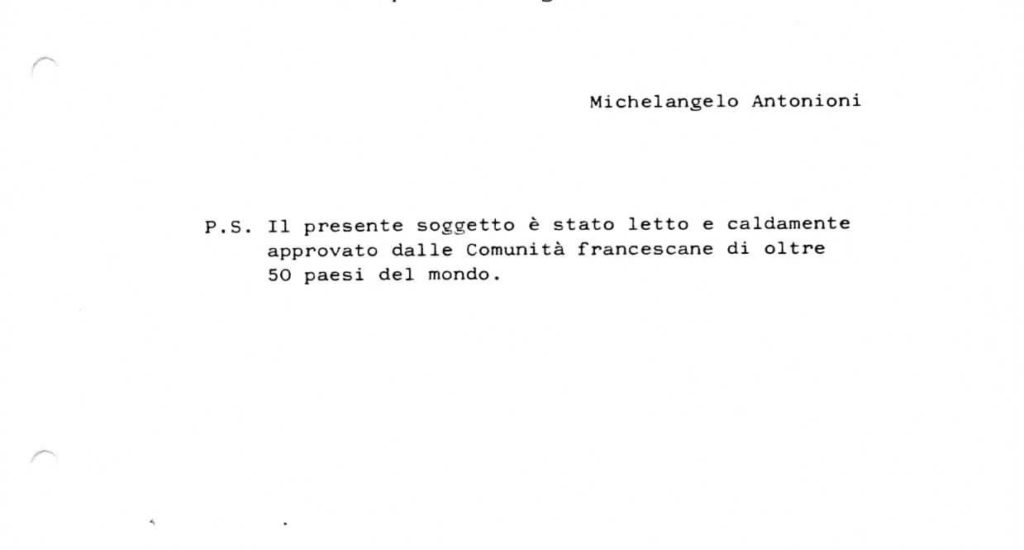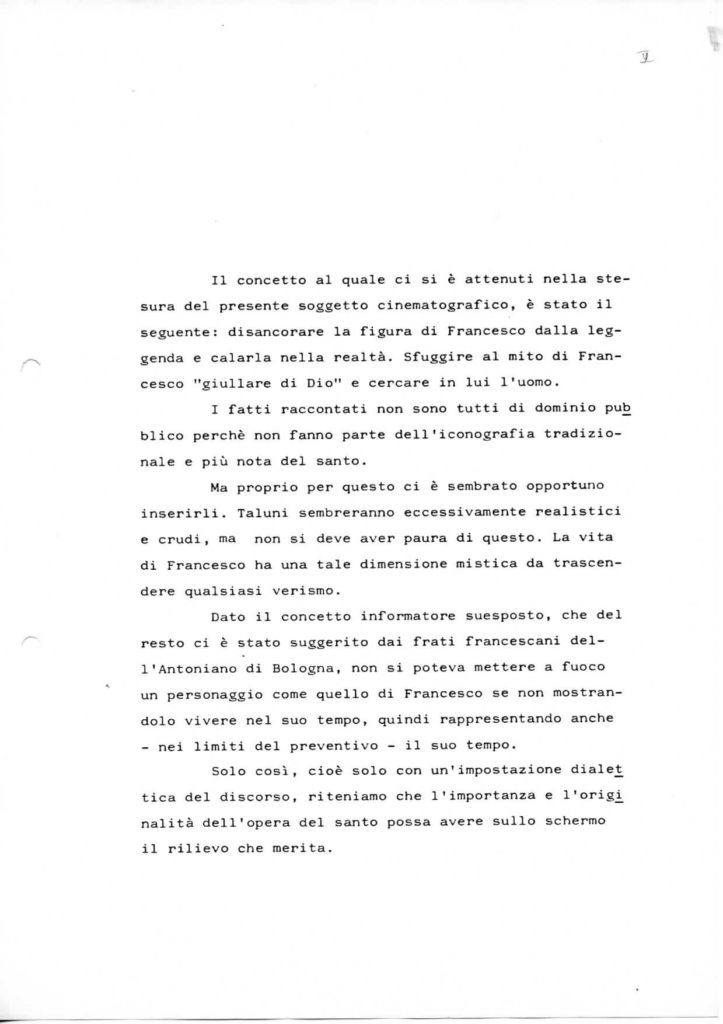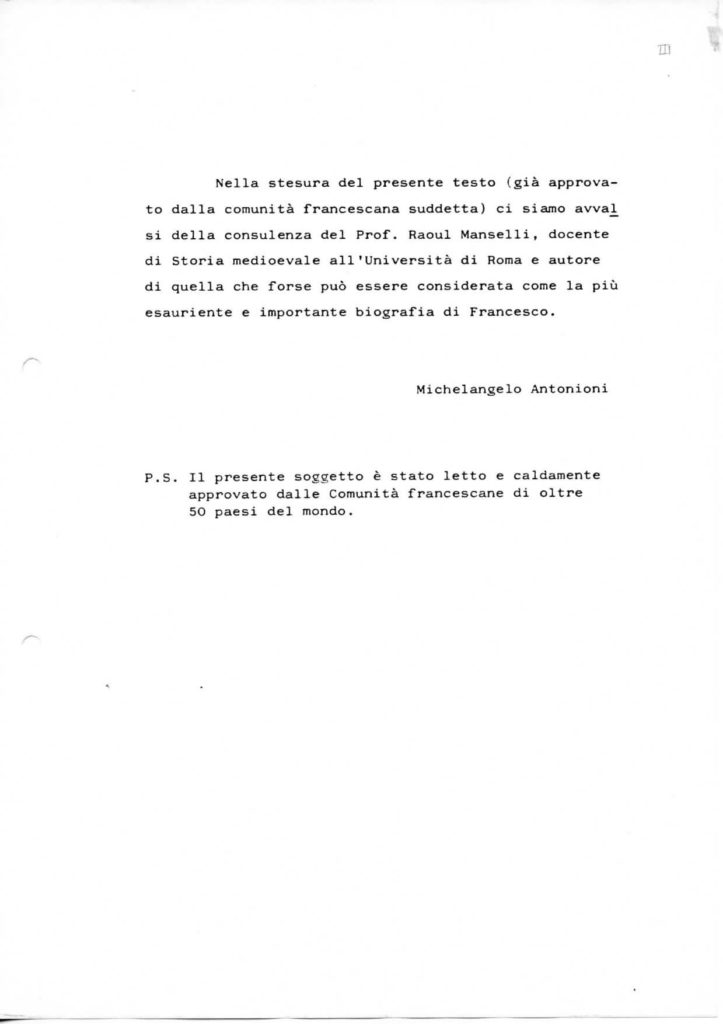
St. Francis’s richly eventful biography obviously offers great entertainment value on the screen. At the same time, his subversive personality fosters a continuous interplay of interpretations, projections and rewritings to which arthouse cinema has shown itself sensitive. Roberto Rossellini, Pier Paolo Pasolini, Liliana Cavani and Franco Zeffirelli are some of the directors that, with their different approaches , have explored the myth of the Umbrian saint.
Michelangelo Antonioni, too, fell under the spell of this myth. Regrettably, unlike the directors mentioned above, he failed to give concrete form to his personal reinterpretation of Francis’s life and today only the preparatory materials for this unfinished film remain. Before mentioning these documents, we will retrace the history of this ill-fated project. In 1982, Antonioni was contacted by the founder of the Antonianum of Bologna, Father Ernesto Caroli, to direct a biopic about the poor friar of Assisi that would attract international interest. After some perplexity dictated by his declared scepticism, Antonioni took warmly to the idea, involving his trusted partner Tonino Guerra and the poet Roberto Roversi in the work. Conceived as an major co-production, the film might have had Roberto Benigni in the part of Francis and Elizabeth Taylor as his mother. According to the Caroli’s memorial, despite the excellent premises for the project, it subsequently ran aground when the director fell ill.

Regrettable as the failure to make the film is, the documentation in the archives at least enables us to surmise the kind of approach Antonioni meant to adopt to the parabola of Francis’s life. In the sub-series “Unfinished Projects”, different versions of the subject can be accessed together with excerpts from the screenplay. An introductory note to one of them indicates that the purpose of the film was “to detach the figure of Francis from legend and restore it to reality. To escape from the myth of Francis as ‘God’s jester’ and seek the man in him.” Hence the director’s intention was to establish a dialectic between the revolutionary spirituality of the saint and the particular historical horizon in which he lived and worked.

Back to focus